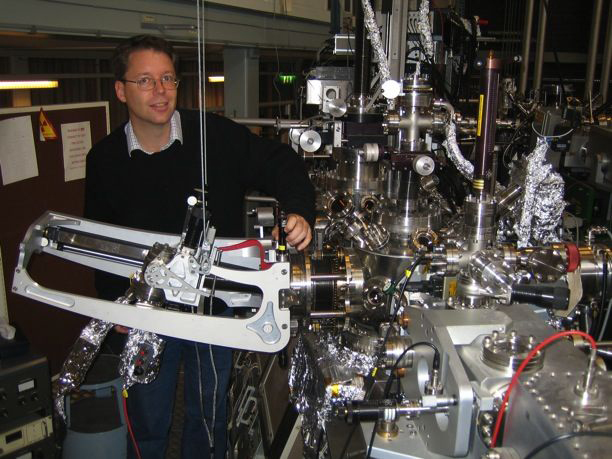 Martin Magnuson studies materials at the atom level. Photo credit: Martin Magnuson
Martin Magnuson studies materials at the atom level. Photo credit: Martin Magnuson
A nanolaminate is layered like plywood, but on a scale that is measured in billionths of a metre. The material in question with the chemical formula Ti3SiC2 has no thermoelectric effect whatsoever. Martin Magnuson, materials physicist at Linköping University (LiU), and his colleagues have now clarified the cause. Their study is published in the prestigious journal Physical Review B.
“We discovered that the thermoelectric power of our material has a positive value in the laminate plane, but an equivalent negative value perpendicular to the layers. The two effects cancel each other out so that the sum is zero,” says Martin Magnuson.
X-ray spectroscopy at Maxlab in Lund, where the researchers could measure the direction of the chemical bonds and electron orbitals in the material, was crucial to their realisation. Powerful vibrations in the silicone atoms, with a frequency three to four times higher against the layers then along them, turned out to be crucial for the electrons’ energy state.
The results are experimental proof and explain why the thermoelectric effect of Ti3SiC2 is zero over a large range of temperatures. That Ti3SiC2 has zero thermoelectric effect is a unique property of the material, with many possible applications in electric appliances: temperature-independent switches or in thermocouples for measuring temperature and pressure.
Conversely, with this knowledge it is possible to design new interesting materials with great thermoelectric effect to generate electricity from waste heat in vehicles and electrical appliances, energy that otherwise must be cooled. In this way a loss can be turned into an energy gain.
The principle behind thermoelectricity is that different temperatures in a material make free charges – like electrons, for example – move from warm to cold areas. The result is an electric voltage.
Article: Electronic-structure origin of the anisotropic thermopower of nanolaminated Ti3SiC2 determined by polarized x-ray spectroscopy and Seebeck measurements, Martin Magnuson, Maurizio Mattesini, Ngo Van Nong, Per Eklund and Lars Hultman. Phys. Rev. B 85:19, 22 May 2012

